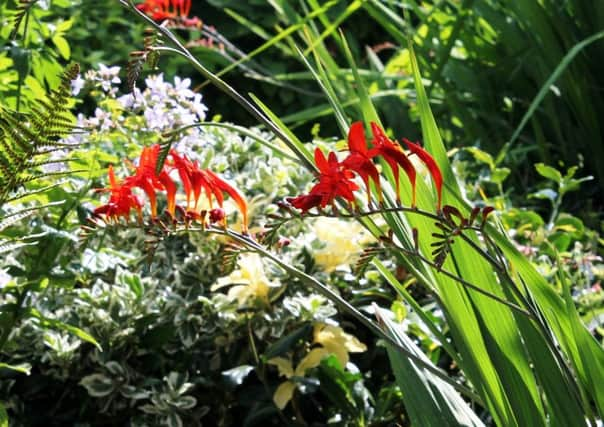Goodbye old friend


Going, going, gone. At least that’s the plan – to dig up and remove several clumps of crocosmia which have been stars in their own right for several years.
Now, however, they have to make way for a new-look border in a new-look garden, but I may just be tempted to keep a small bunch as a sort of thanks for all their hard work over many seasons.
Advertisement
Hide AdAdvertisement
Hide AdIn a lot of small gardens lurk many plants, hiding away beneath shrubs or peeping out shyly from among the leaves of other, larger neighbours, but that can’t be said of crocosmia, or its smaller cousin, montbretia.
The montbretia in my garden has been there, untouched, for so long that it has become so compact that it is now just a mass of sword-like leaves with very few flowers to break the greenery. It, too, is going to have to go, but I know from past experience that it will fight hard to keep its hundreds of tiny bulblets in the soil.
But the crocosmia is a different matter. In the years since it was planted in its sunny home, it has gone from strength to strength, first producing those long lance-like leaves, and then decorating them with butterfly flowers of the most startling red.
So, while the montbretia has sulked, the crocsmia has thrived, proving itself the perfect flower for late summer. Its fiery red blooms are not only bright but also warm, soft and really full, and as the season progresses, the flower stems are joined by berry-bearing stems. The seed buds left by the flowers start out green and later turn red, some even with a hint of purple.
Advertisement
Hide AdAdvertisement
Hide AdThere are quite a few large-flowered varieties of crocosmia, such as the familiar ‘Emily McKenzie’ (orange/red) as well as small-flowered varieties like ‘Red King’ (red, obviously), ‘George Davidson’ (yellow/orange) and ‘Meteore’ (red/yellow). In between are cultivars with freesia-like spikes, such as ‘Mistral’ (red with pink) and ‘Lucifer’ – definitely the most popular choice.
Crocosmia is a tuberous plant and a native of South Africa. It was introduced to Europe about 1900. This was a small flowered variety. The first large-flowered crocosmia came onto the market in the 1950s.
The plants like a well-drained, humus-rich soil in a sheltered sunny spot. To propagate, lift and divide every three years. Be warned – they can become invasive.